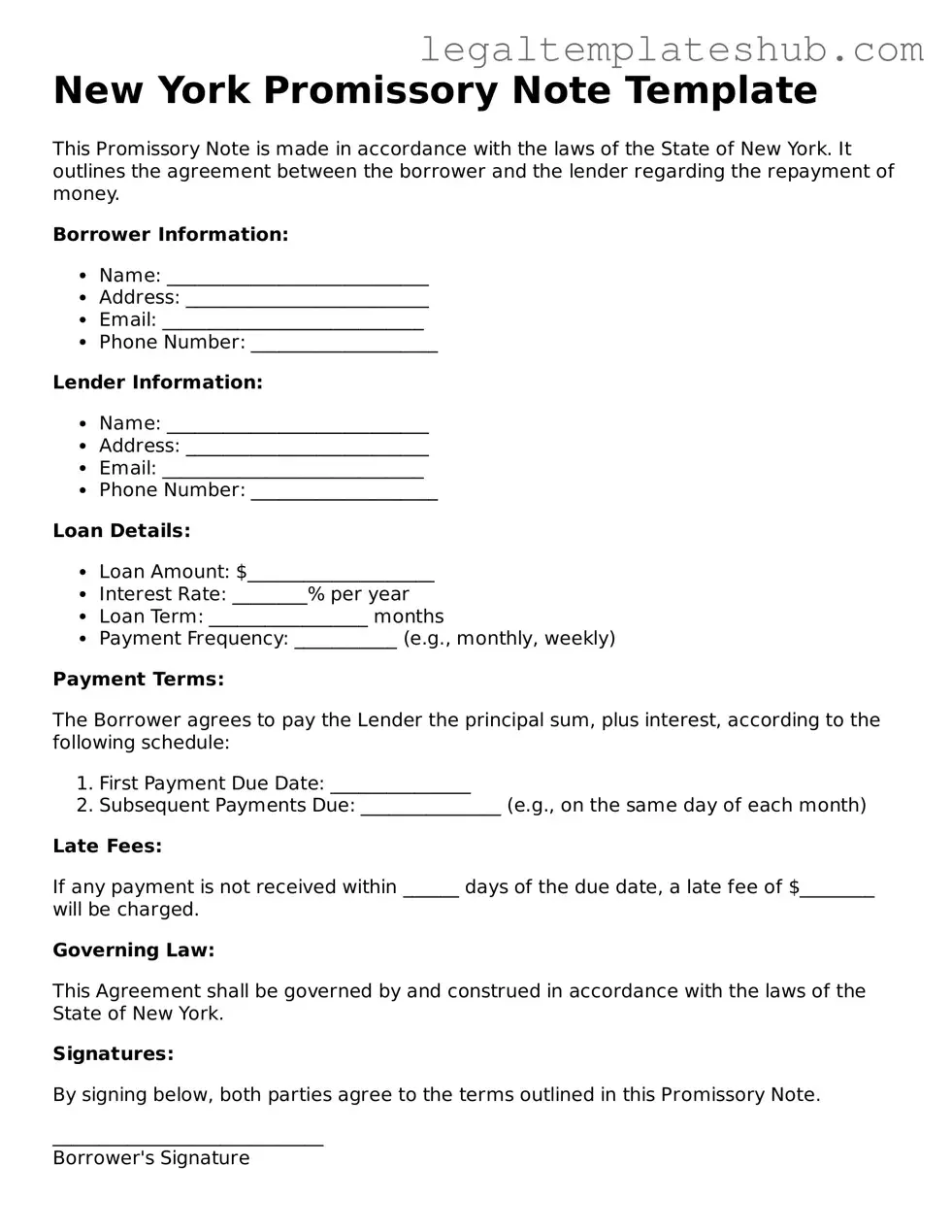Printable Promissory Note Document for New York
A New York Promissory Note is a written promise to pay a specified amount of money to a designated person at a defined time. This financial document serves as a crucial tool for both lenders and borrowers, outlining the terms of repayment and ensuring clarity in the transaction. To get started with your own Promissory Note, fill out the form by clicking the button below.
Access Editor
